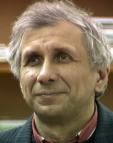|
||
|
|
Instytut Podstawowych
Problemów Techniki PAN, Warszawa |
|
|
Abstract: Fast developments in micro- and nanotechnology, advances in microfabrication, manipulation and engineering of systems characterized by micrometer and, more recently, nanometer scales create the demanding challenge for traditional fluid mechanics. In the response outburst of new experimental tools, theoretical approaches and numerical methods becomes available, allowing fluid dynamists to explore and characterize such systems. Here we present short review of the subject illustrated by two snap-shots from our recent research: turbulent flow in micro-channel and electrospinning of nanofibers. The first of described research problems involves both numerical and experimental investigation of instability and turbulence structures within micro-channel, with the main application being break-up of micro-emulsion droplets and micro-scale mixing. Due to the small dimensions, achieving turbulent eddies and other flow instabilities is more difficult than at the macro-scale. More difficult yet is imaging such turbulent structures. In the study water pumped in a narrow gap of an emulsifier is investigated experimentally using micro-PIV technique and compared with numerical predictions performed using the commercial code Fluent. The micro-PIV system, based on epifluorescence illumination and high speed imaging, allows for collection instantaneous flow velocity fields in a 0.4mm high and 1mm long channel formed between two glass plates. The experimental data are compared with the numerical results obtained using both turbulent and laminar flow models. It was found that due to small channel dimensions and very short flow development length the turbulent energy dissipation takes place mainly in the gap and shortly behind it. The estimated value of mean energy dissipation is used to predict mean droplets diameter. These predictions are validated using experimental data for the emulsion. The production of nano-scale dimension materials in not a trivial task. One of the simplest possibilities to reach small size is electrospinning of nanofibres from polymer solutions or melts. It is obtained by issuing a liquid jet electrically charged by high voltage potential (~20kV/m). The axial tension of a fibre, provided by electrostatic forces, leads to elongation ratios of 10000 and more without breaking the thread. The resulting nanofibre is collected as an interconnected web of thin filaments (fibre mat) on the surface of a grounded target. Characterisation of the charged liquid jet dynamics creates challenging problem, involving hydrodynamics, rheology and electrostatics. The problem is analysed experimentally and compared with simplified theoretical model. By applying numerical simulations parametric study is performed to elucidate basic factors responsible for the phenomenon. |
||
